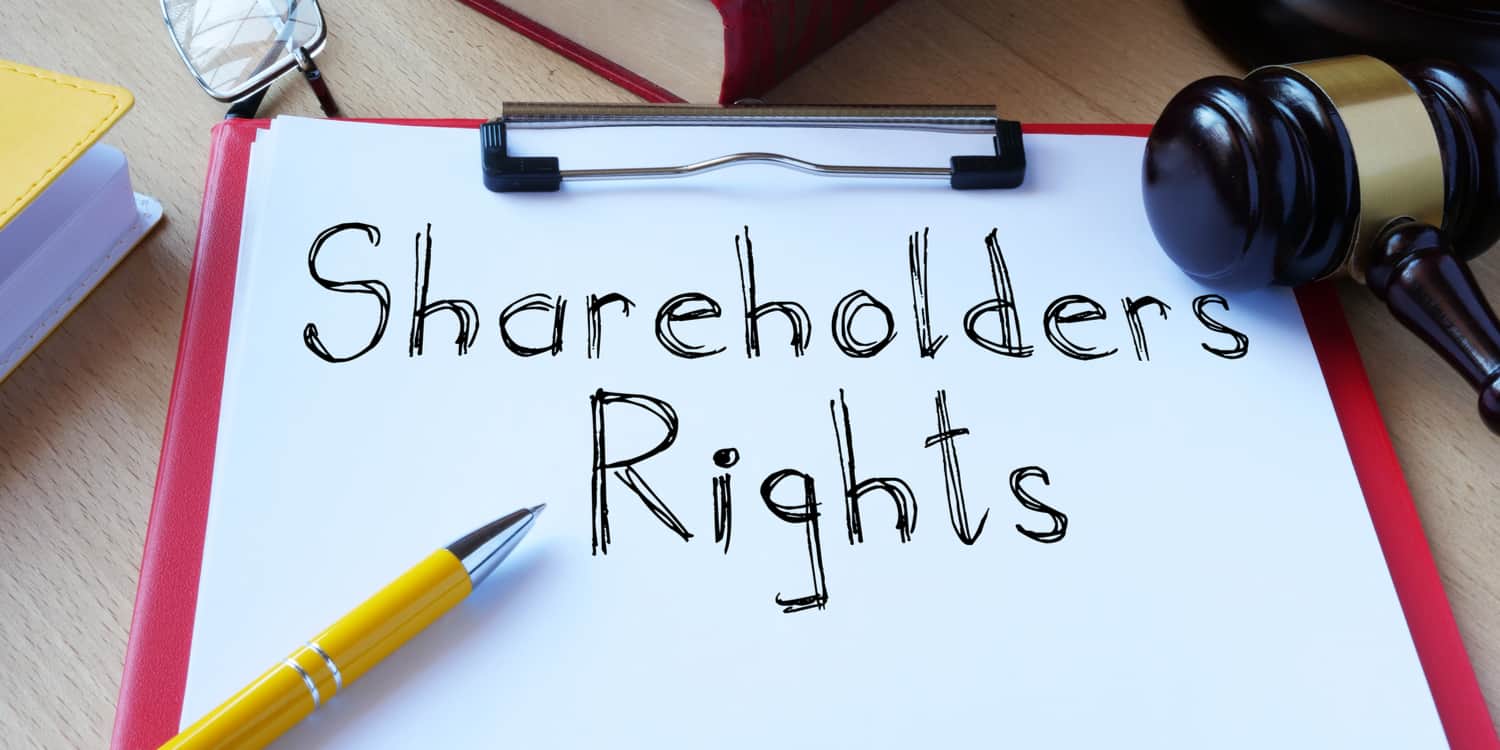Voting rights in a limited company are the rights of shareholders to vote on certain company matters that are beyond the scope of the directors’ decision-making powers. Details of shareholders’ voting rights are specified in the ‘prescribed particulars’ of the rights attached to shares.
Prescribed particulars are defined in the Companies (Shares and Share Capital) Order 2009 and set out in a company’s articles of association and shareholders’ agreement.
Do all shares have voting rights?
Limited companies decide which voting rights to attach to shares. They have the option to provide full voting rights, voting rights only in specified circumstances, multiple votes per share, or no voting rights. However, this all depends on the company’s articles of association.
Standard ordinary shares, which are issued by the vast majority of new companies, carry one vote per share. Any shareholder who owns at least one ordinary share has the right to attend general meetings and vote on certain company decisions. This is the only class of shares you can issue if you adopt “model” articles.
Management shares, which are less common, provide additional voting rights to shareholders at general meetings. This class of share typically carries two or more votes per share. They are usually only issued to founding members as a means of retaining or increasing their decision-making powers
Some classes of shares – such as ‘preference’, ‘redeemable’, and ‘alphabet’ shares – can be created with or without the right to vote. Whilst others, such as ‘non-voting shares’, never carry the right to vote.
If you want to issue any type of share other than ordinary, or vary any rights attached to ordinary shares, you will need to change the model articles of association accordingly or adopt bespoke articles.
Which decisions require shareholders to vote?
The directors of a limited company are responsible for routine business and management decisions. Shareholders, on the other hand, make decisions (by way of vote) on exceptional matters that occur infrequently, such as:
- changing the company name
- altering the articles of association
- disapplying pre-emption rights of shareholders
- approving substantial property transactions
- authorising the director(s) to allot shares
- approving a director’s long-term service contract for a period of two or more years
- approving share buybacks by the company
The company’s articles and shareholders’ agreement will specify which decisions must be made by shareholders.
How do shareholders vote on decisions?
Shareholders make decisions by voting for or against proposed resolutions, either at a general meeting (an official meeting of the shareholders) or in writing (a ‘written resolution’).
A resolution is simply a motion (a formal proposal) that is put forward for decision. If the required majority of votes are cast in favour, the resolution is ‘passed’ and the decision is legally binding.
Shareholders can make decisions by ordinary resolution or special resolution. Ordinary resolutions are passed by a simple majority (i.e., over 50% of the votes), whereas special resolutions must achieve a 75% majority.
The Companies Act 2006 (and sometimes the articles) defines which decisions must be made by special resolution. Where unspecified, an ordinary resolution should be used by default.
To pass a resolution at a general meeting, shareholders will normally vote on a show of hands, but sometimes a poll may be used instead. To pass a written resolution, shareholders will signify their agreement in writing, as per the instructions stated on the proposed resolution at the time of its circulation.
Written resolutions are increasingly common, mainly on account of their being more convenient and practical. Almost any resolution that can be passed by shareholders at a general meeting can also be passed in writing without the need to hold a meeting.









